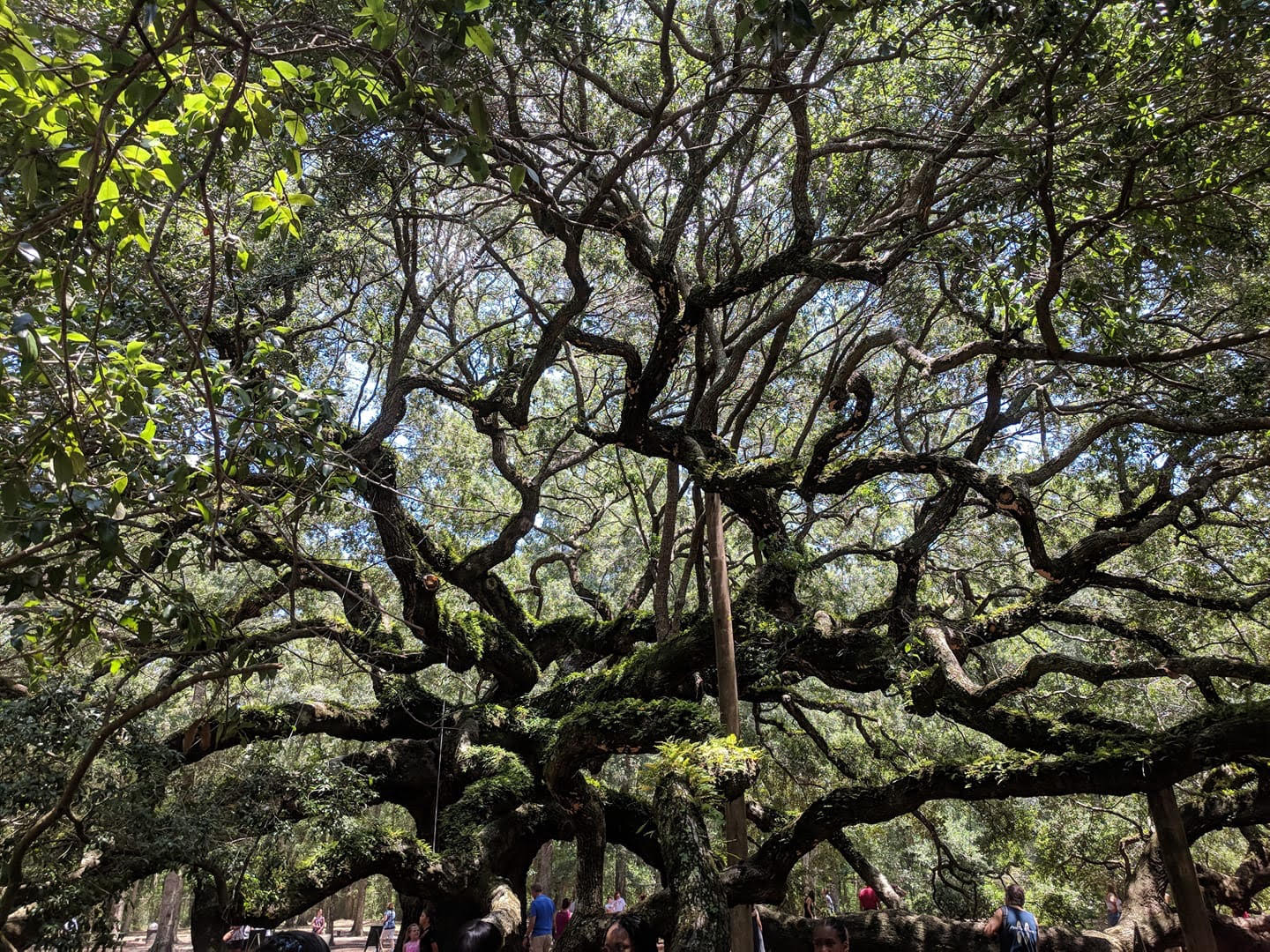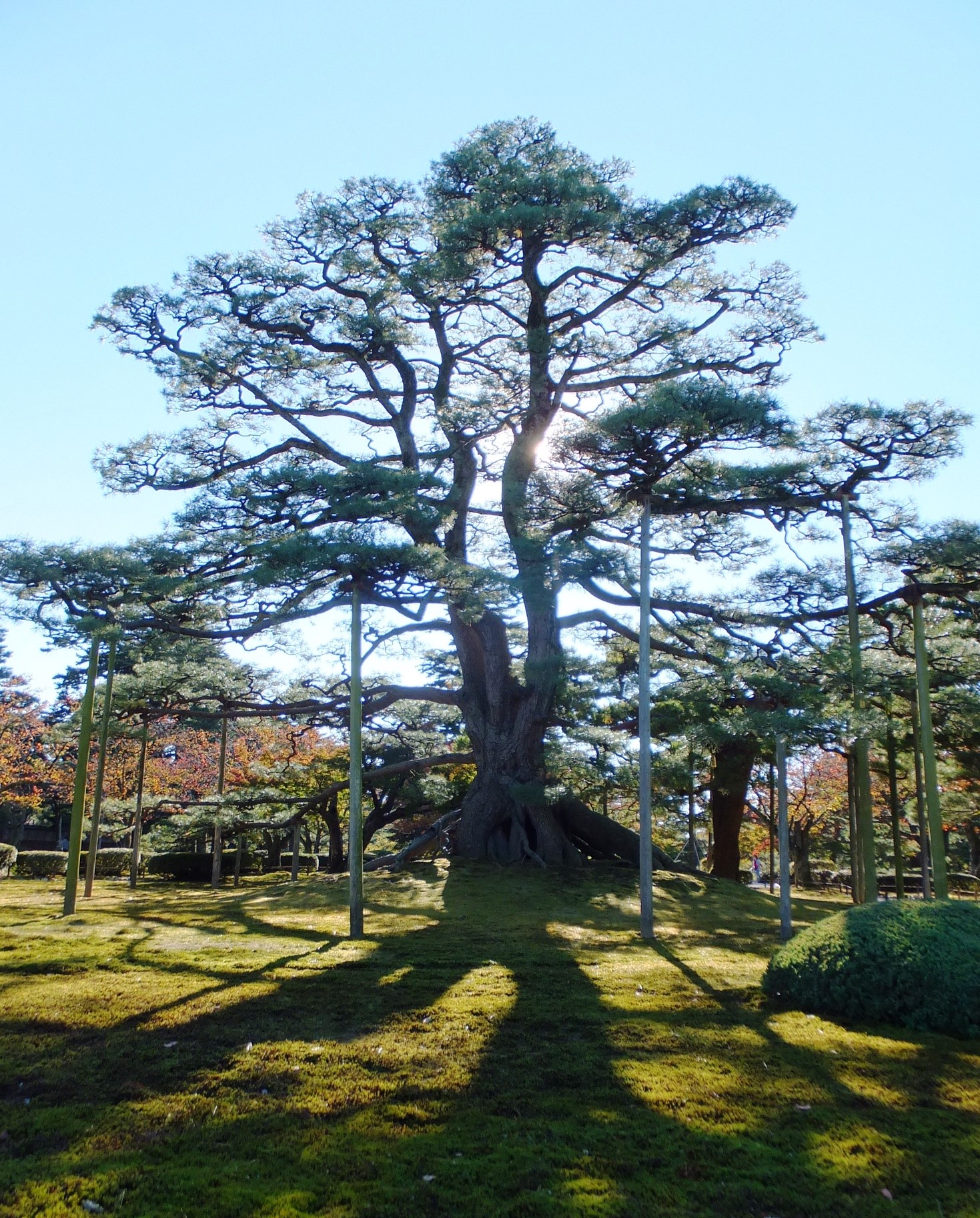At Casa Museo Na Bolom - San Cristóbal de las Casas - Chiapas - Mexico.
The yellow pine (Pinus oocarpa) is a medicine tree that has long been sacred to the Mayan peoples who live in the southern part of Mexico and Guatemala. Indigenous to Mexico and Guatemala, this graceful tree can reach 25 meters in height.The needles are used in religious ceremonies and funerary rites. Folk healers use the needles in infusions to treat bronchial asthma and anxiety. A commercial preparation made from the needles is prescribed to treat pneumonia.

Johns Island, South Carolina
Angel Oak is a magnificent Southern live oak (Quercus virginiana) located near Charleston, South Carolina. This tree is estimated to be between 400-500 years old, stands 66.5 feet (20 m) tall and measures 28 feet (8.5 m) in circumference. It also provides 17,200 sq. feet (1600 sq. m) of shade. The 17 acres adjacent to this tree was purchased by the Lowcounty Land Trust, protecting the Angel Oak from encroaching development. Website: www.angeloaktree.com. Photo courtesy of Nell Eckersley.

This unique wisteria (fuji) is the centerpiece of the famous Ahikaga Flower Park in Tochigi Prefecture, Japan. Dating from 1870, this magnificent tree is 1/2 acre (1990 square meters) in size and requires a complex network of bamboo and metal structures to support it. The fuji is the symbol of May in Japan, and represents the energy of spring. The wisteria is also the subject of Fuji Museme, the Wisteria Maiden, a traditional Kabuki dance–drama. In this drama, the female spirit of the wisteria is symbolically linked to unrequited love, beauty, endurance and heartbreak. The wisteria is also an important symbol of long life and immortality. Its vibrant color and intoxicating frangrance have made it one of the most revered trees species in Japan. Photo courtesy of Hideo Sakata.
The plum tree (Prunus mume) is native to Japan, China, Korea and Taiwan. Because it blooms in the winter, it is seen as a harbinger of spring. Known as ume in Japan, the plum tree is revered as as a protective charm against evil: it is traditionally planted in the northeast of the garden, the direction from which evil is believed to come. Eating the pickled fruit for breakfast is also supposed to protect one from misfortune. The ume has been used in Chinese medicine for centuries, and is said to promote strength and endurance. Recent studies have found that it is effective in helping treat gum diseases, as well as gastritis and ulcer. In Asia, plums are often pickled and preserved to enjoy as food, and are used to make tea, juice and plum wine. Photo courtesy of Hideo Sakata. Taken in February, 2018.
Copyright © 2018 by Nathaniel Altman. All rights reserved
Gallery 1 Gallery 2 Gallery 3 Gallery 4 Gallery 6
Click tree to return to home page. ![]()